Rhino horn has now become more valuable than gold and many of the illicit drugs. As a result of this, networks of global crime syndicates send armed poachers into the field to slaughter the rhino whose horns are then viciously hacked off. These horns are then whisked away to the east via well-established contraband routes. Amongst a suite of mechanisms to try and save the rhino from poaching, many conservation authorities and private rhino owners are now translocating some of their rhino to safer areas and they are also dehorning their animals.
Well-qualified veterinary teams carefully remove the horns while the rhino is under sedation. Any horns removed through this process are strictly documented following legislative requirements and they are then taken off-site from the protected area where they are kept under stringent security controls at a safe and undisclosed location. After a period of 18 – 24 months these horns regrow to a length where they will once again have to be removed in order to keep the rhino safe. This is indeed a temporary measure and it is hoped that in the time it takes for the horns to grow back, longer term and longer lasting solutions will be found that halts the killing of the rhino.
 1 of 33: An important part of rhino conservation under the current time where poaching is rife, is the dehorning of rhino and their translocation to safer locations.
1 of 33: An important part of rhino conservation under the current time where poaching is rife, is the dehorning of rhino and their translocation to safer locations.
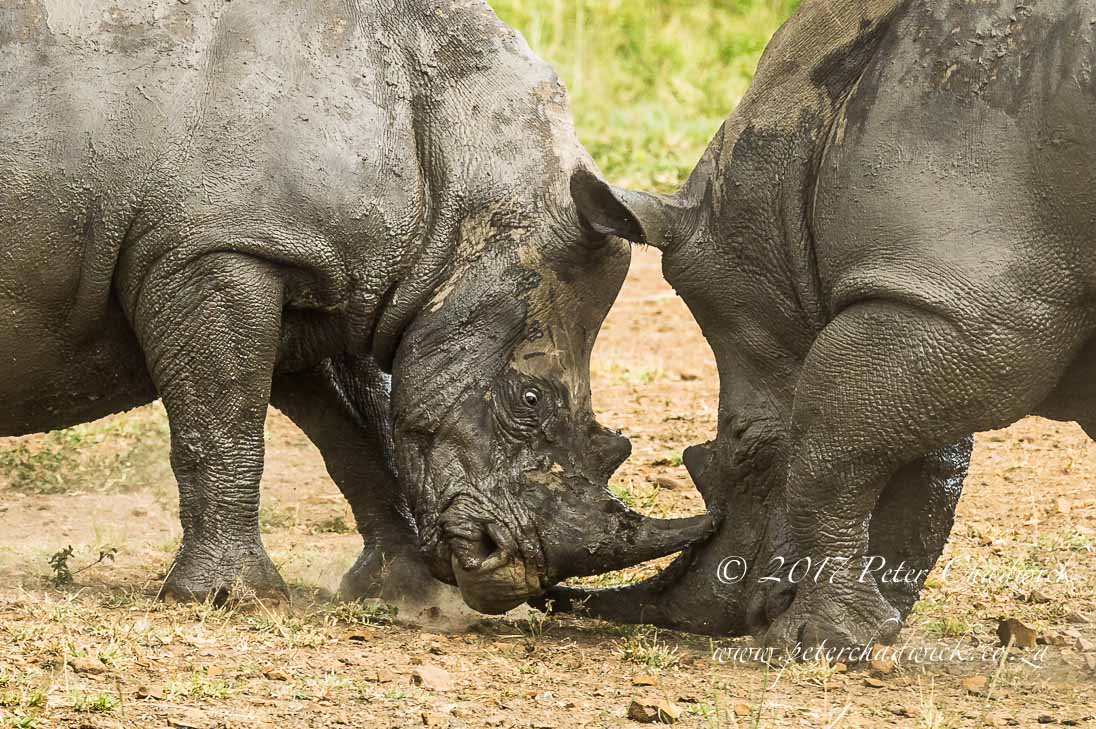 2 of 33: Two white rhino bulls fight and shove one another with their horns.
2 of 33: Two white rhino bulls fight and shove one another with their horns.
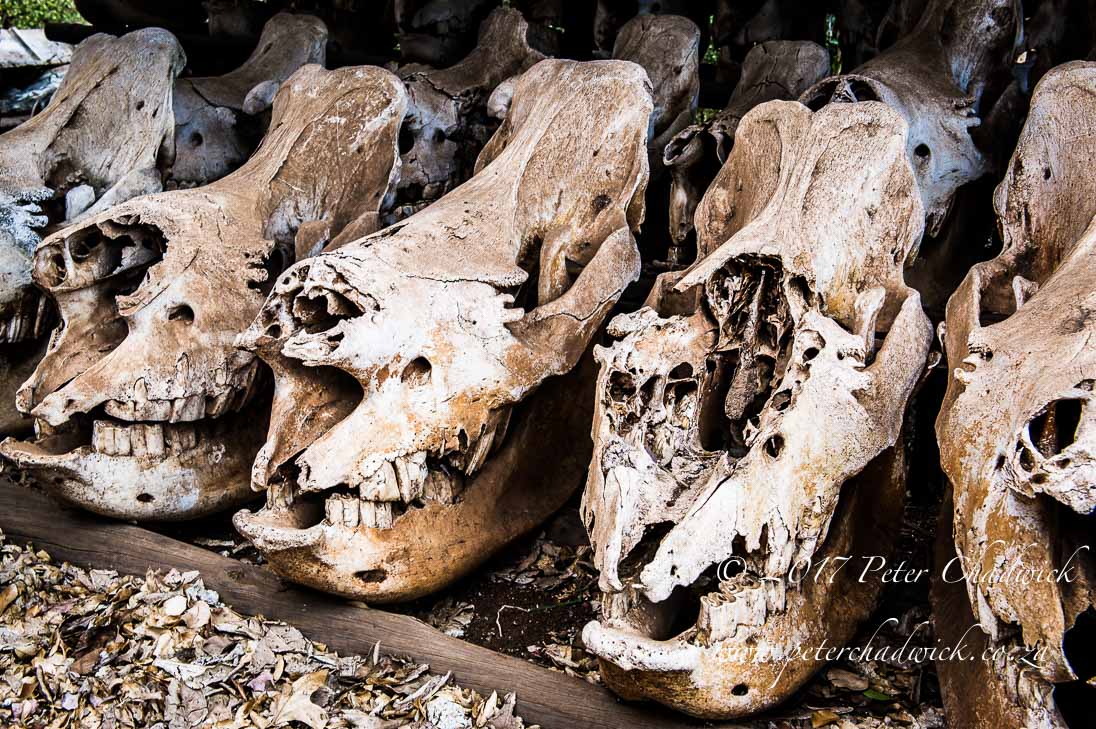 3 of 33: The bleached skulls of poached rhino are a grim reminder of the horrific impact of the current crisis facing rhino populations world-wide.
3 of 33: The bleached skulls of poached rhino are a grim reminder of the horrific impact of the current crisis facing rhino populations world-wide.
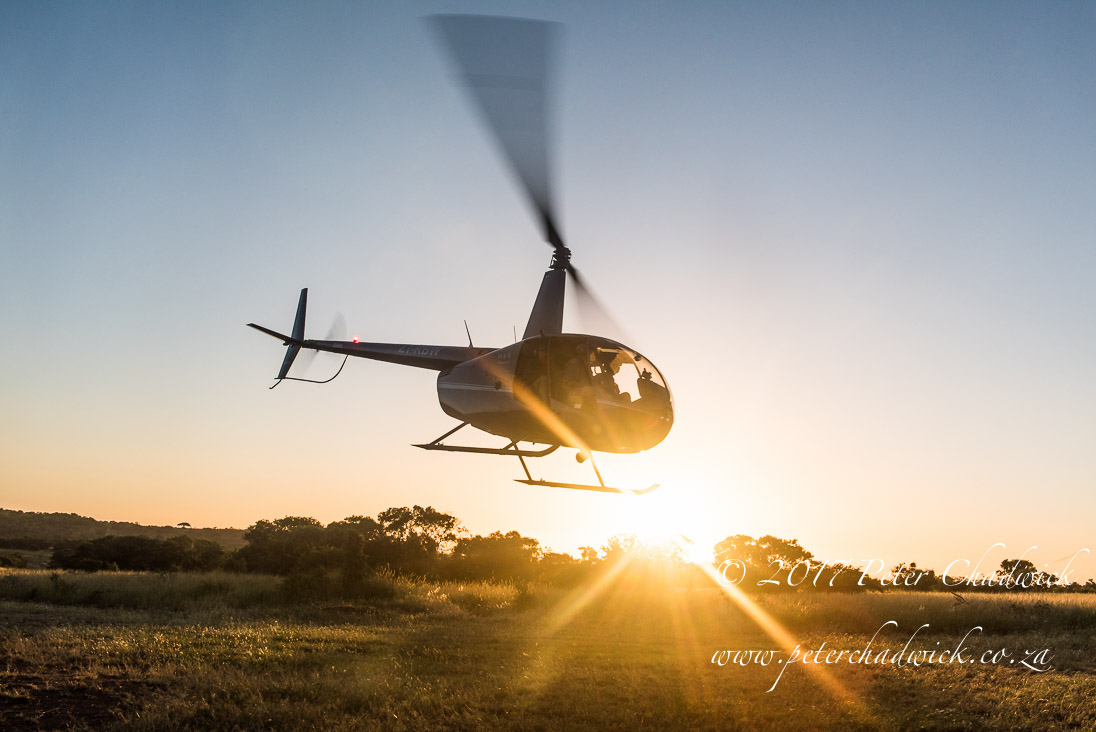 4 of 33: A helicopter takes off at dawn in search of rhino that will be dehorned.
4 of 33: A helicopter takes off at dawn in search of rhino that will be dehorned.
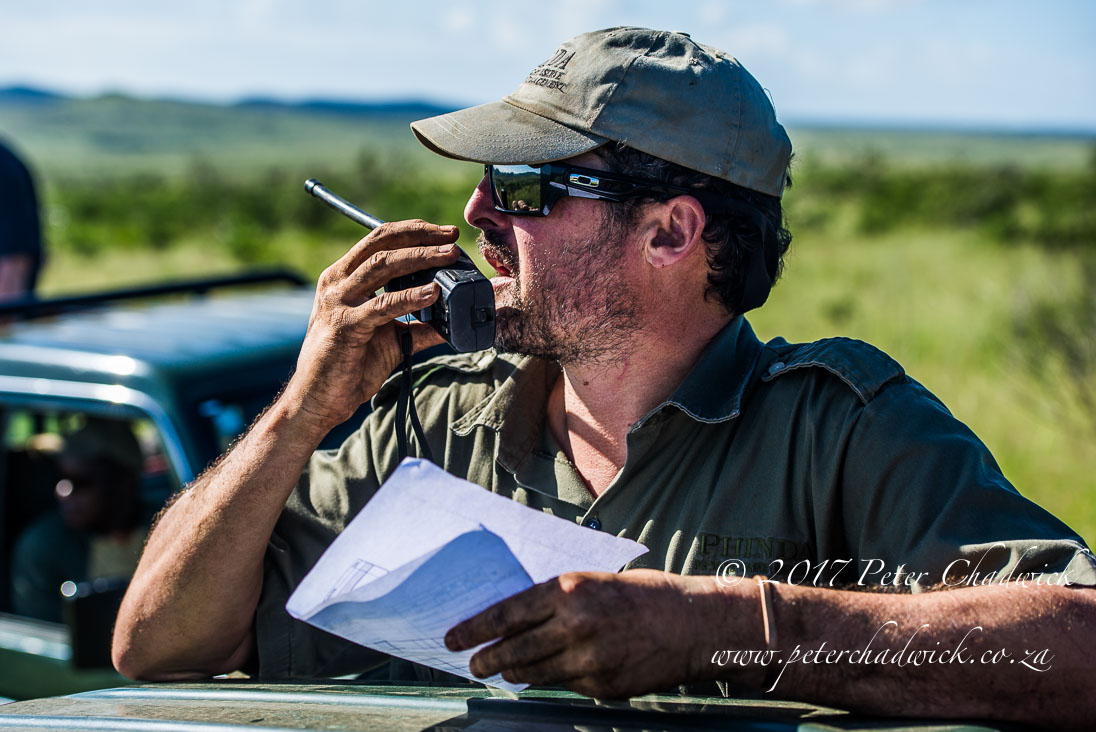 5 of 33: Simon Naylor, the protected area manager of Phinda Private Game Reserve, communicates with a helicopter team that is searching for rhino.
5 of 33: Simon Naylor, the protected area manager of Phinda Private Game Reserve, communicates with a helicopter team that is searching for rhino.
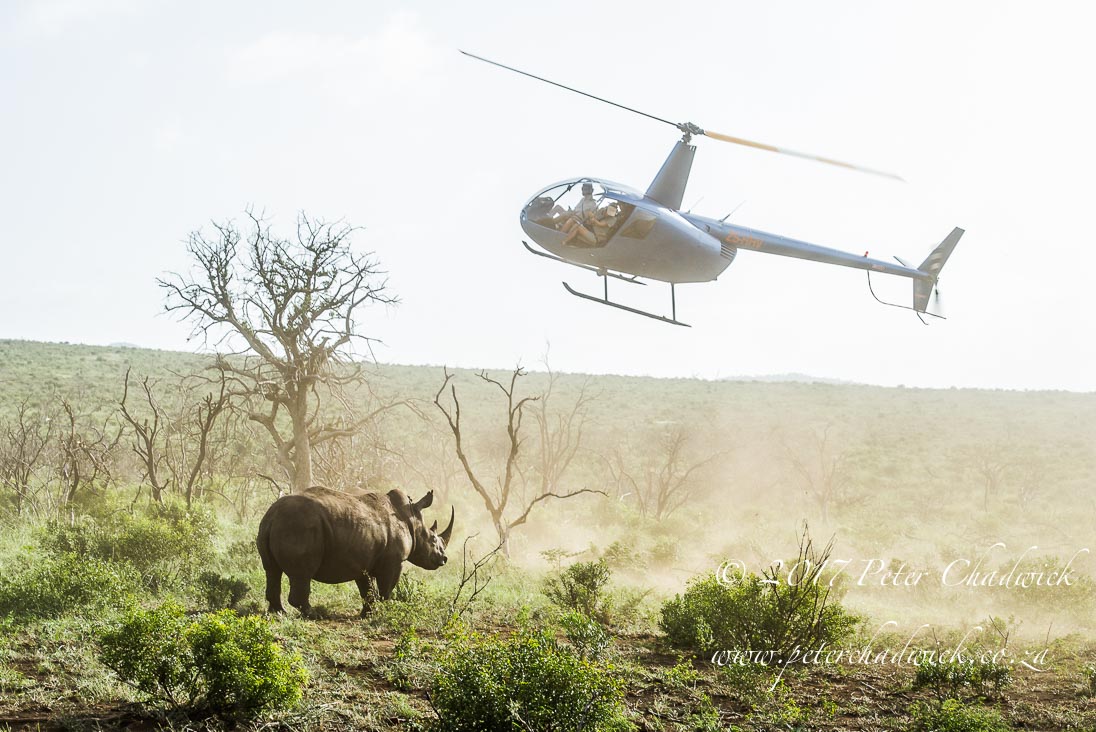 6 of 33: A helicopter, with vet on board swoops, in low to dart a white rhino for dehorning.
6 of 33: A helicopter, with vet on board swoops, in low to dart a white rhino for dehorning.
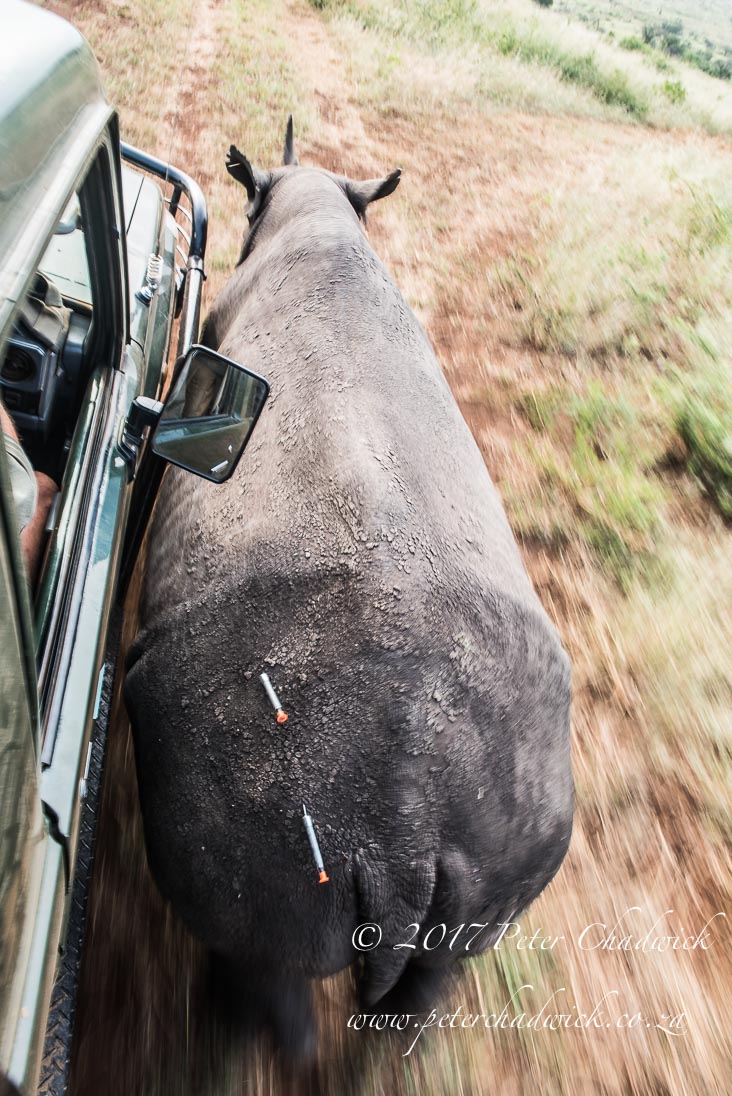
7 of 33: A darted black rhino is carefully steered to a place of safety as immobilizing drugs begin to take effect.
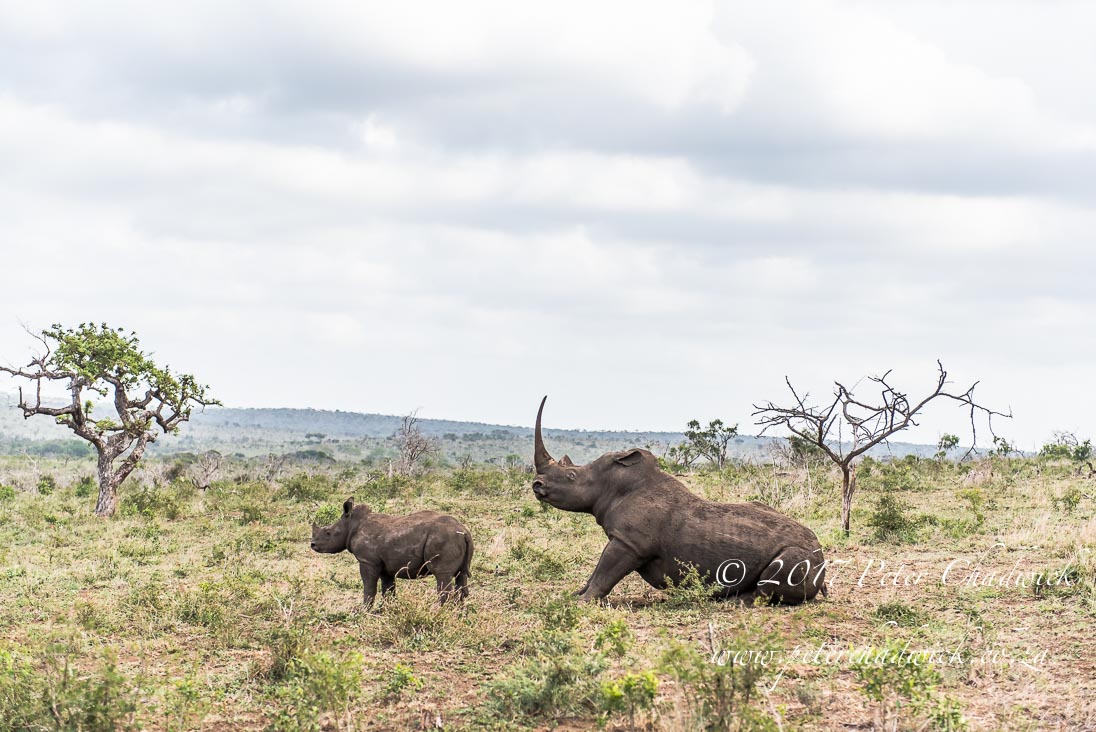 8 of 33: A white rhino mother and calf that have both been immobilised begin to settle down in an open area.
8 of 33: A white rhino mother and calf that have both been immobilised begin to settle down in an open area.
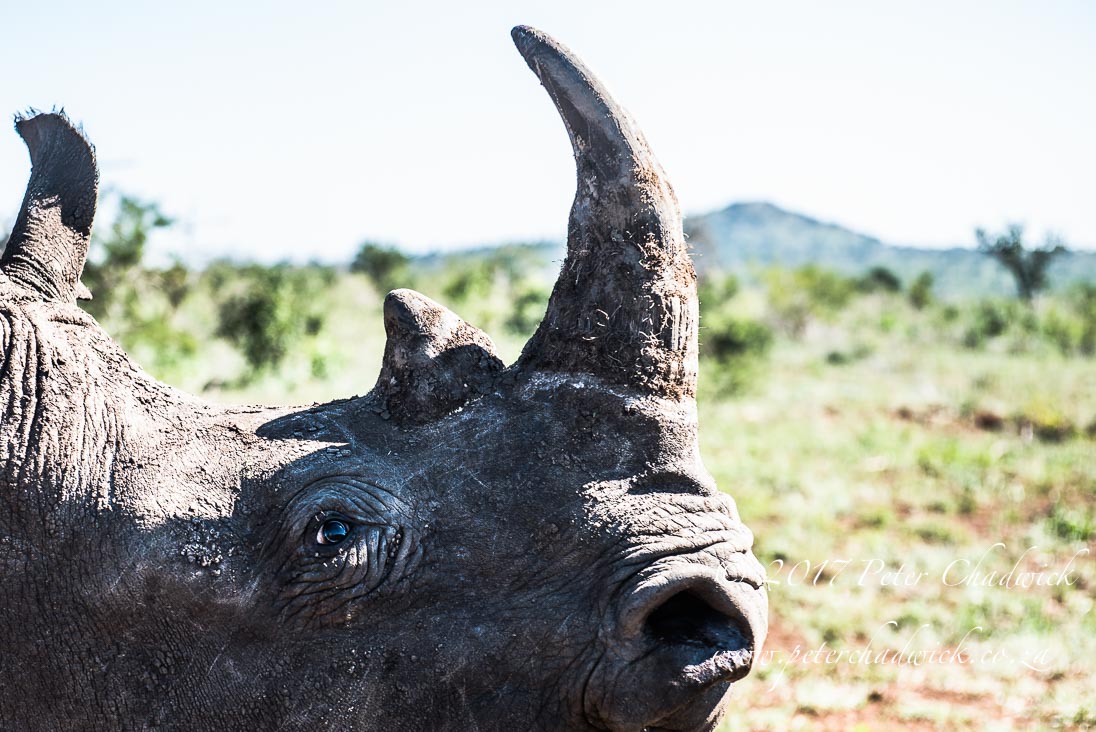 9 of 33: A white rhino, with fully dilated pupils, staggers prior to collapsing as immobilizing drugs begin to take effect. Eyes are immediately covered to protect them from light.
9 of 33: A white rhino, with fully dilated pupils, staggers prior to collapsing as immobilizing drugs begin to take effect. Eyes are immediately covered to protect them from light.
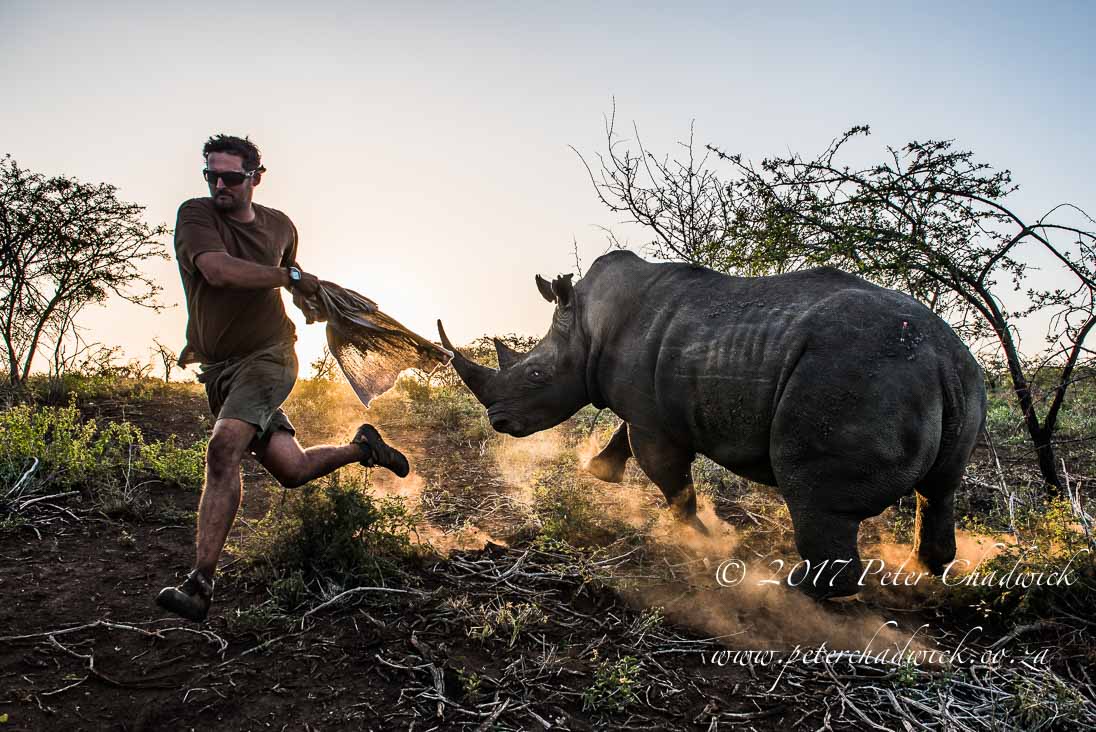 10 of 33: A partially immobilized white rhino bull quickly turns on Simon Naylor as he tries to cover the eyes of the rhino for protection.
10 of 33: A partially immobilized white rhino bull quickly turns on Simon Naylor as he tries to cover the eyes of the rhino for protection.
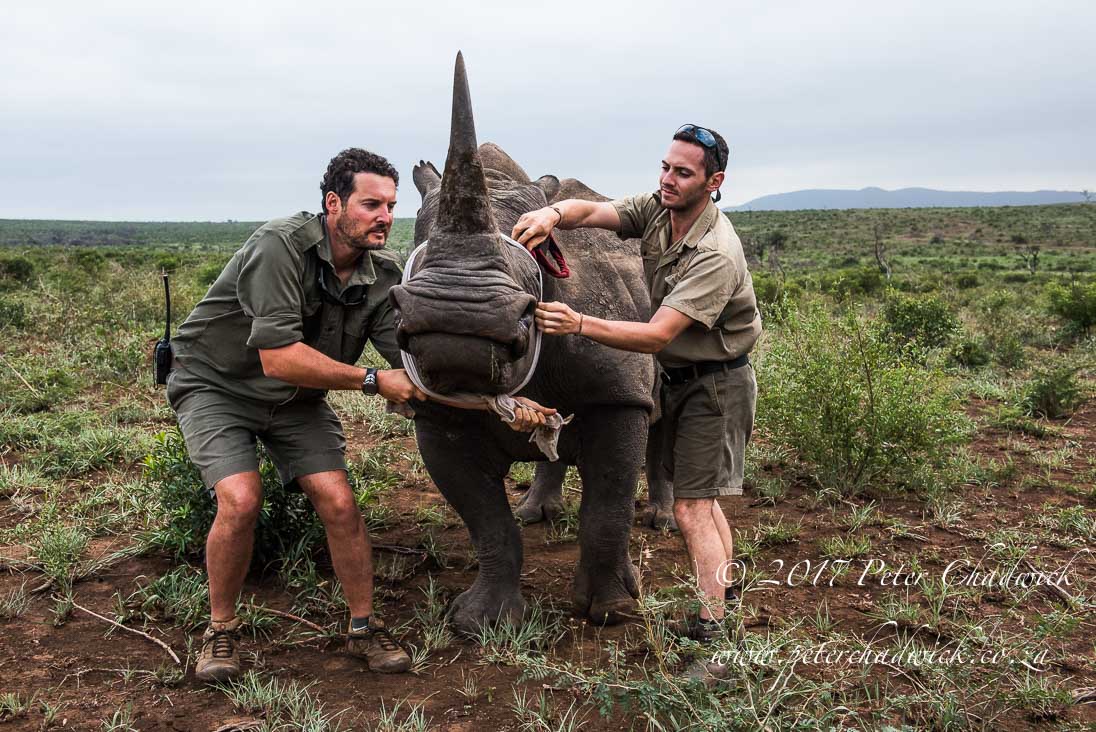 11 of 33: The eyes of a white rhino are covered with a large cloth to protect them from light and dirt during the dehorning process.
11 of 33: The eyes of a white rhino are covered with a large cloth to protect them from light and dirt during the dehorning process.
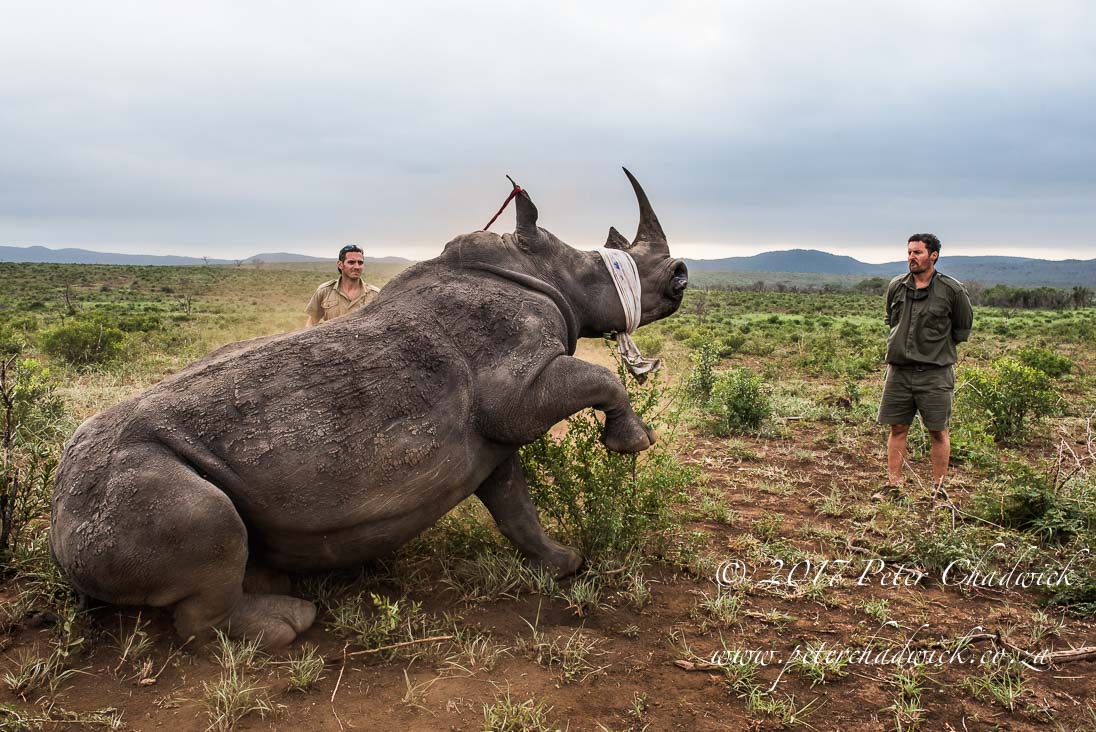 12 of 33: A large white rhino settels down as immobilizing drugs take effect.
12 of 33: A large white rhino settels down as immobilizing drugs take effect.
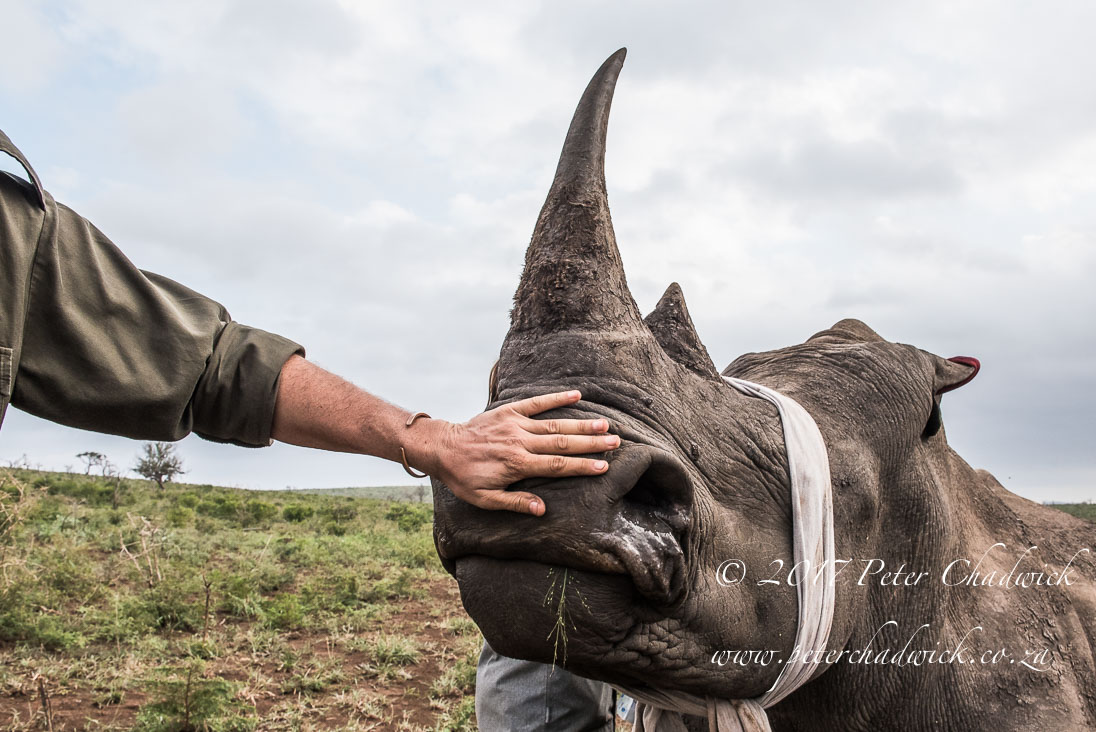 13 of 33: Simon Naylor checks on the state of a large white rhino.
13 of 33: Simon Naylor checks on the state of a large white rhino.
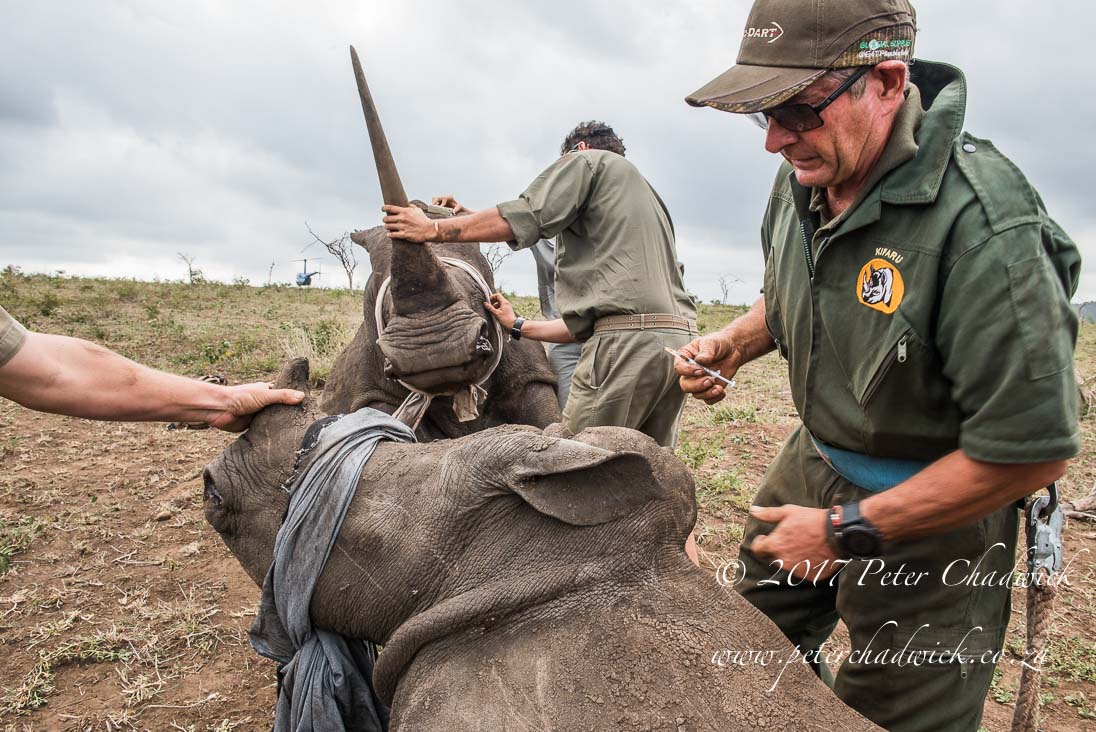 14 of 33: The entire immobilizing and dehorning process is supervised by well-qualified vets. This ensures the greatest level of care and protection for the rhino.
14 of 33: The entire immobilizing and dehorning process is supervised by well-qualified vets. This ensures the greatest level of care and protection for the rhino.
 15 of 33: A rope is used to help with the turning of a rhino that has fallen badly - legs have to be carefully placed to ensure continual blood flow.
15 of 33: A rope is used to help with the turning of a rhino that has fallen badly - legs have to be carefully placed to ensure continual blood flow.
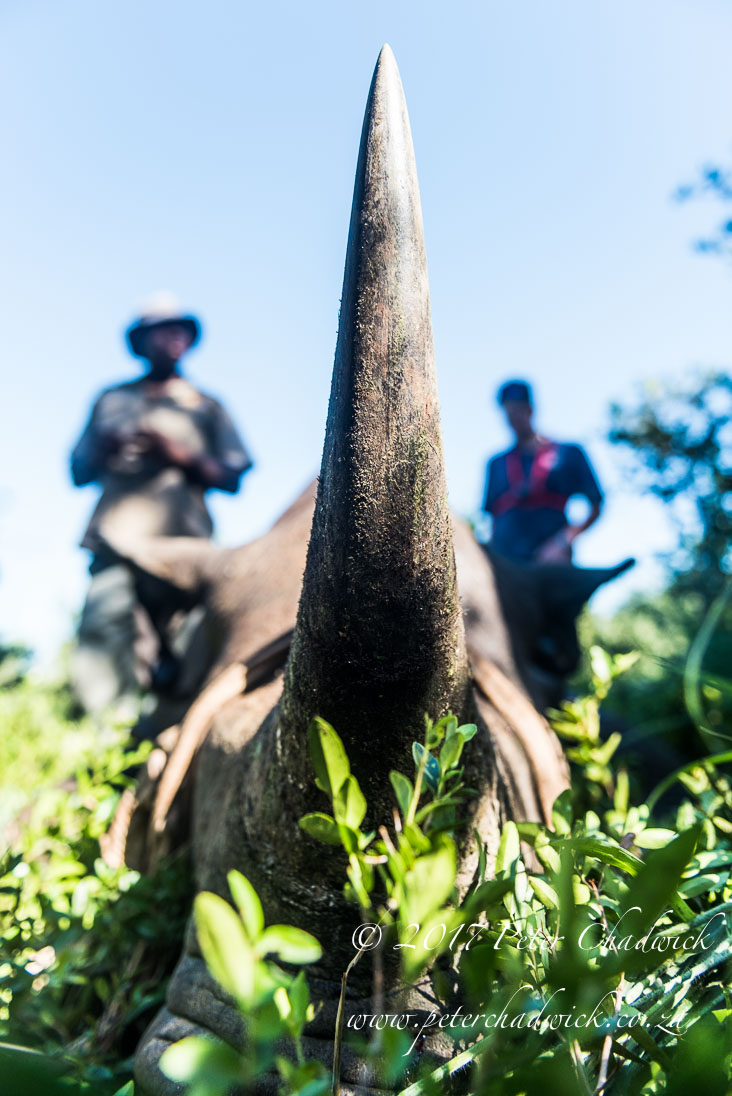
16 of 33: The sharp dagger-like horn of a black rhino prior to dehorning taking place.

17 of 33: Both horns are carefully measured prior to dehorning.
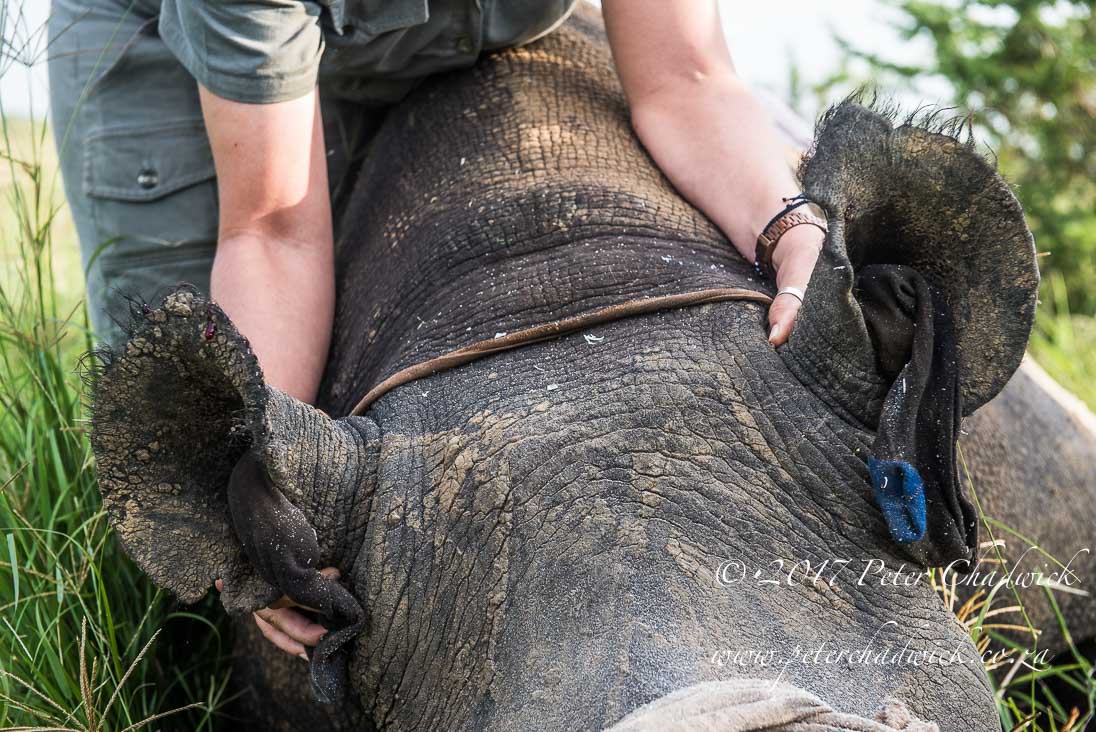 18 of 33: Ear notches, that identify individual rhino, are checked and confirmed as part of the dehorning process.
18 of 33: Ear notches, that identify individual rhino, are checked and confirmed as part of the dehorning process.
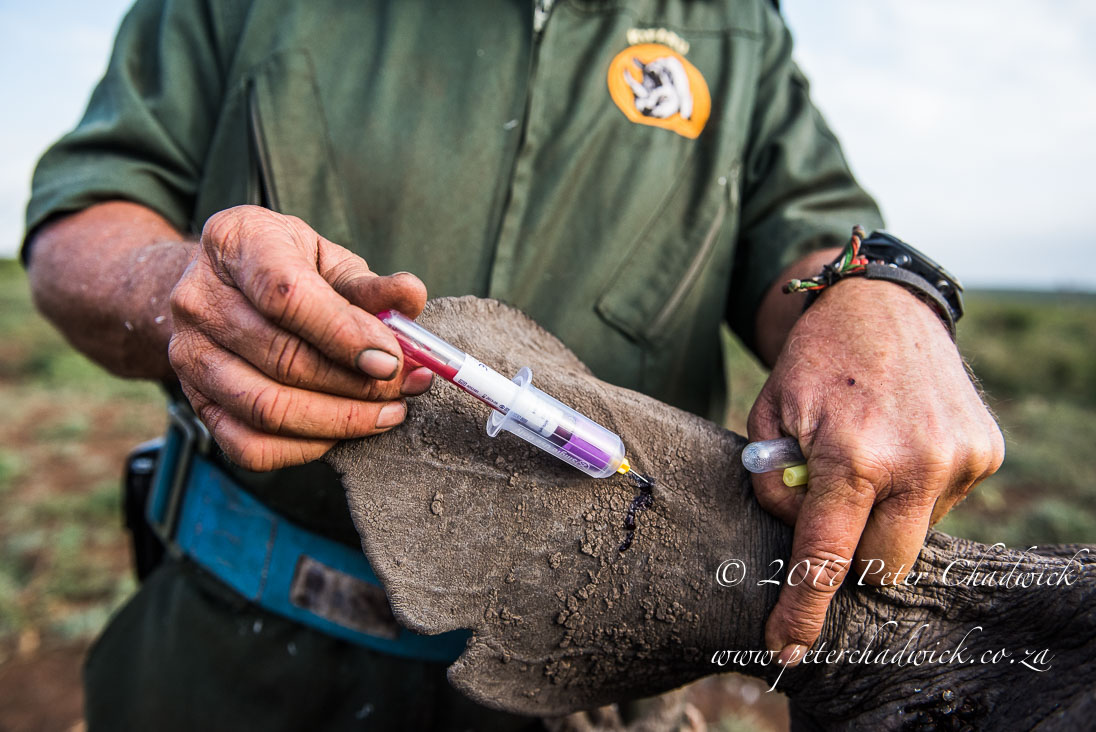 19 of 33: Blood samples are taken from each rhino for DNA and this is submitted to the national database system that tracks rhino.
19 of 33: Blood samples are taken from each rhino for DNA and this is submitted to the national database system that tracks rhino.
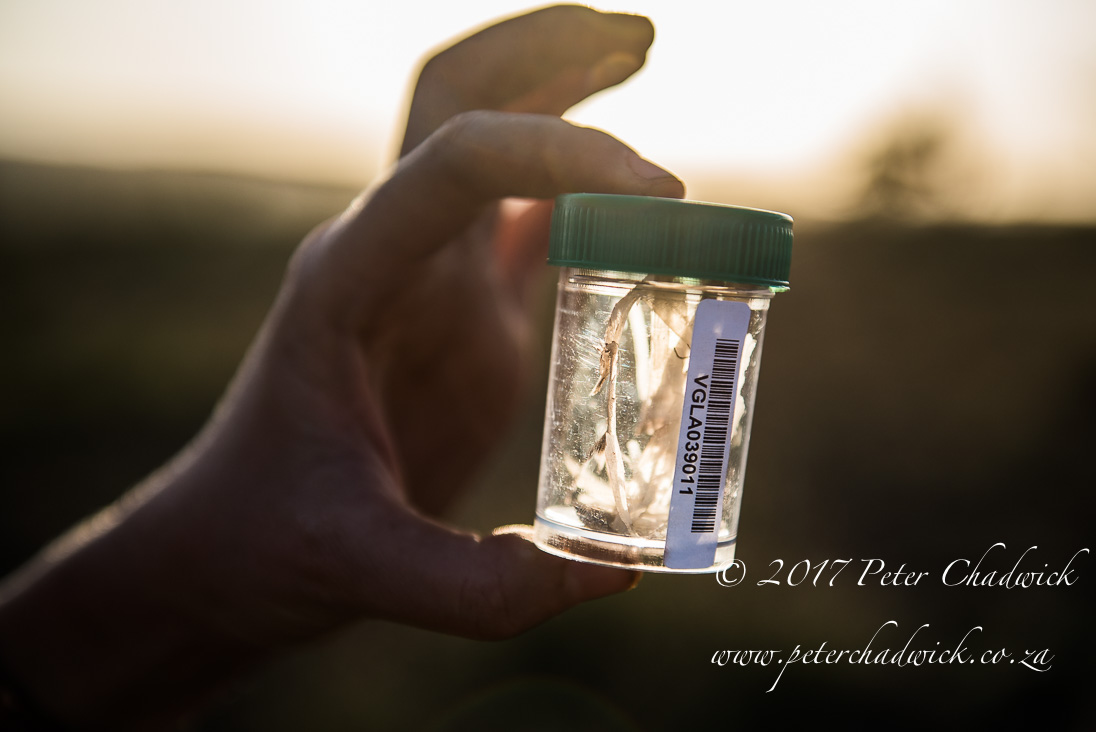 20 of 33: Horn shavings are collected for DNA.
20 of 33: Horn shavings are collected for DNA.
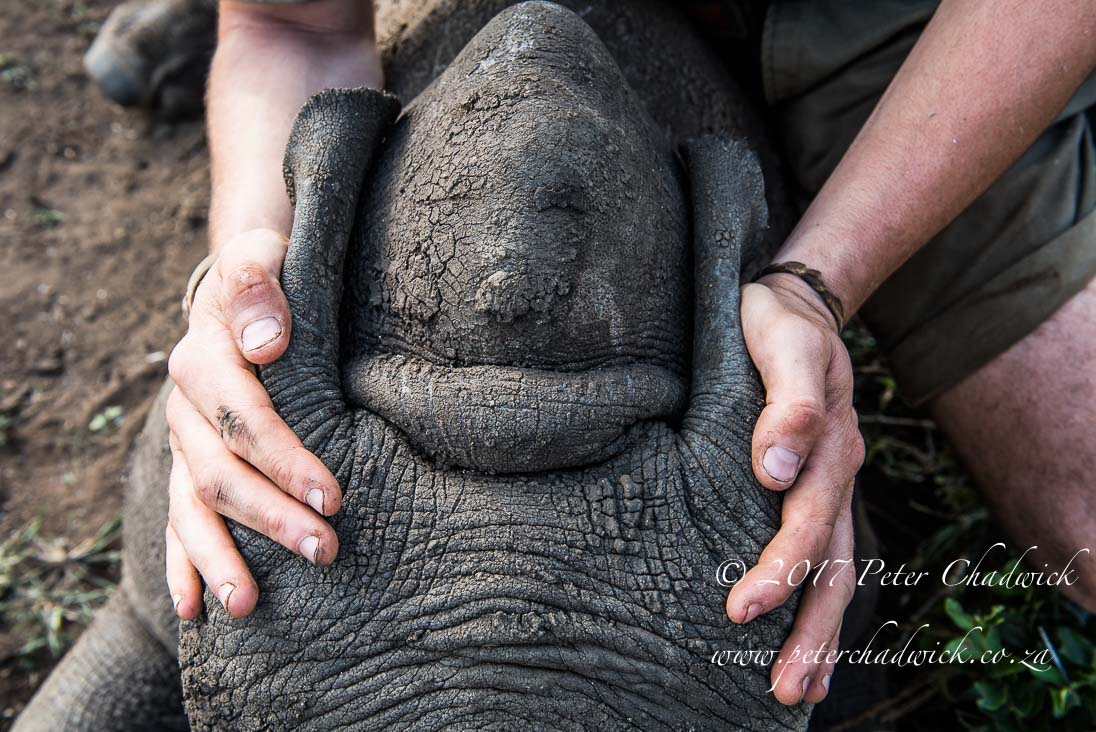 21 of 33: During all proceedures when the rhino is immobilised, ears that are sensitive to sound, are carefully closed and covered.
21 of 33: During all proceedures when the rhino is immobilised, ears that are sensitive to sound, are carefully closed and covered.
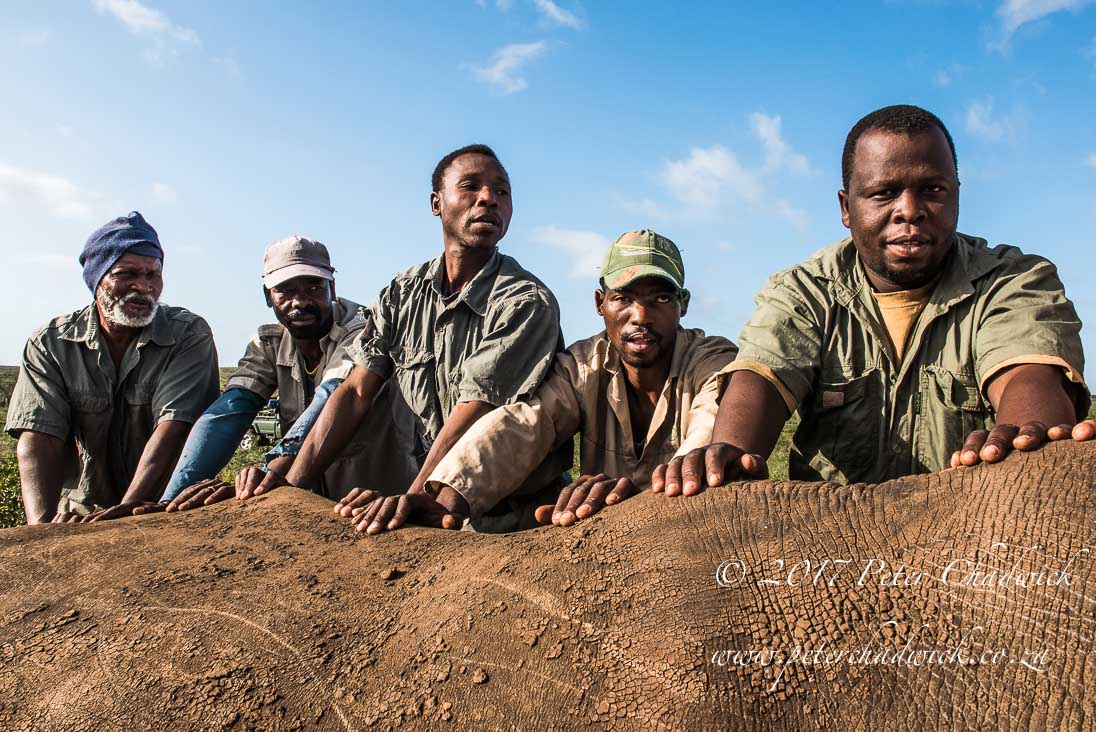 22 of 33: Successful immobilization and dehorning is dependant on a well-organised team with each member knowing their exact responsibility. Team work ensures reduced stress on any animals.
22 of 33: Successful immobilization and dehorning is dependant on a well-organised team with each member knowing their exact responsibility. Team work ensures reduced stress on any animals.
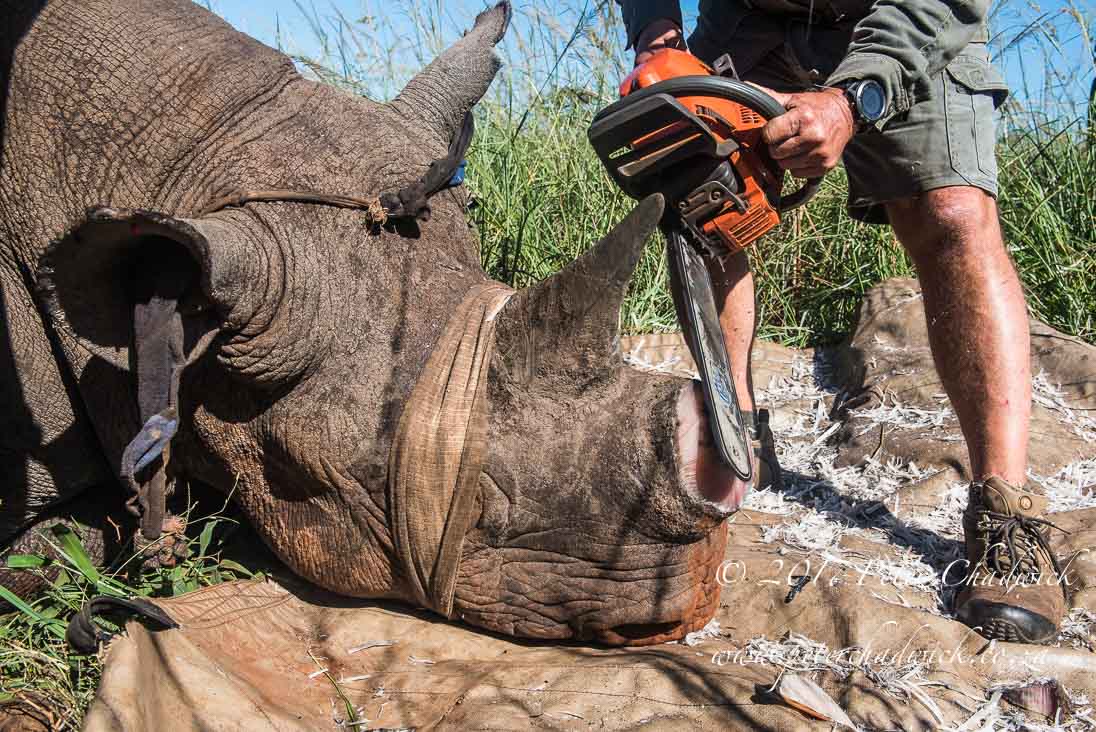 23 of 33: Both horns are carefully removed during dehorning.
23 of 33: Both horns are carefully removed during dehorning.
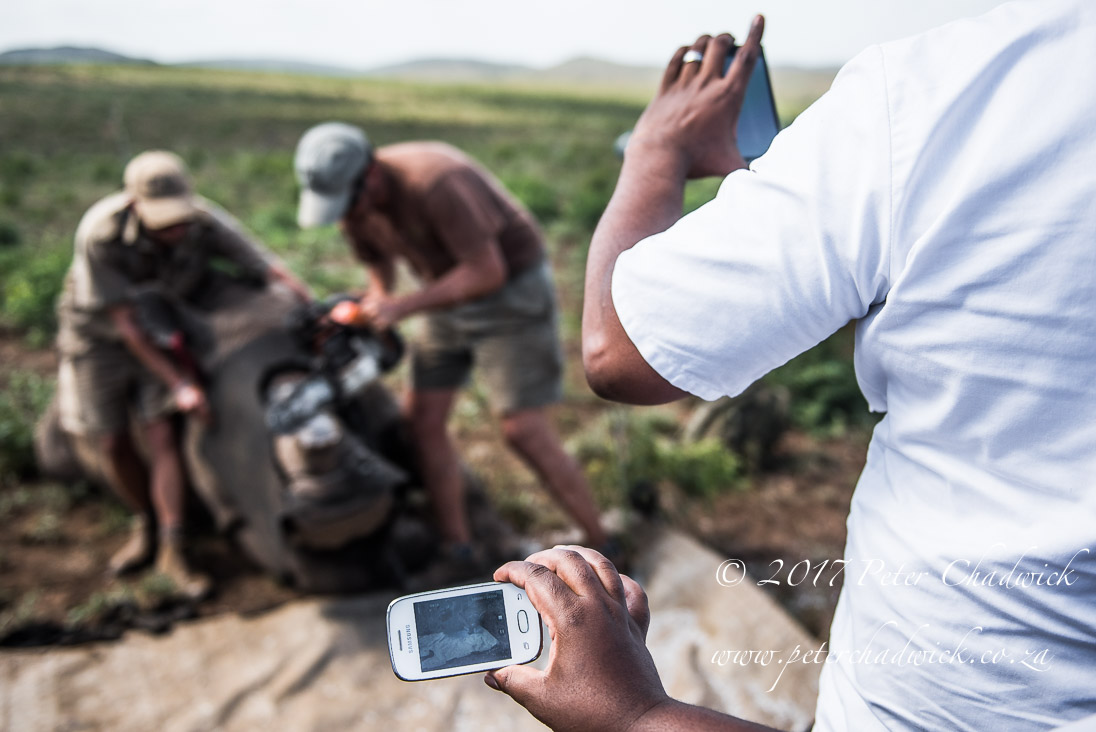 24 of 33: Where ever possible, members from neighbouring communities are invited to attend and watch dehorning. This helps with garnering their support for the protection of these iconic animals.
24 of 33: Where ever possible, members from neighbouring communities are invited to attend and watch dehorning. This helps with garnering their support for the protection of these iconic animals.
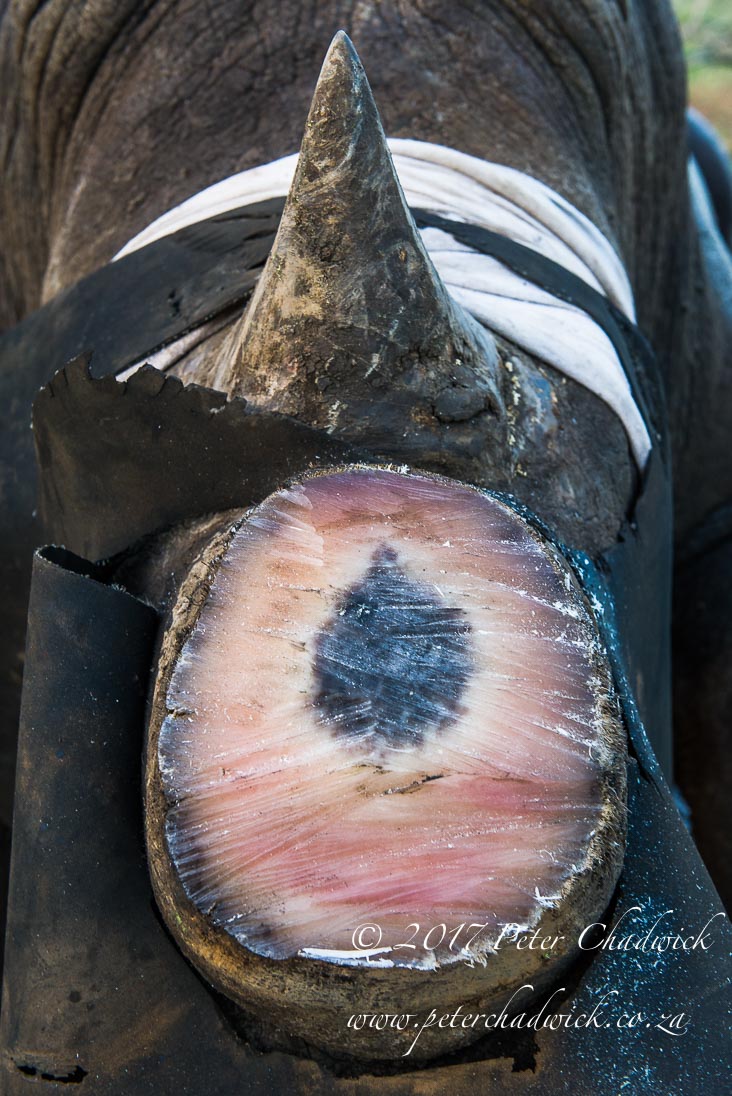 25 of 33: The remaining horn stump after dehorning. Horns do grow back and dehorning needs to be repeated every eighteen to twenty-four months.
25 of 33: The remaining horn stump after dehorning. Horns do grow back and dehorning needs to be repeated every eighteen to twenty-four months.
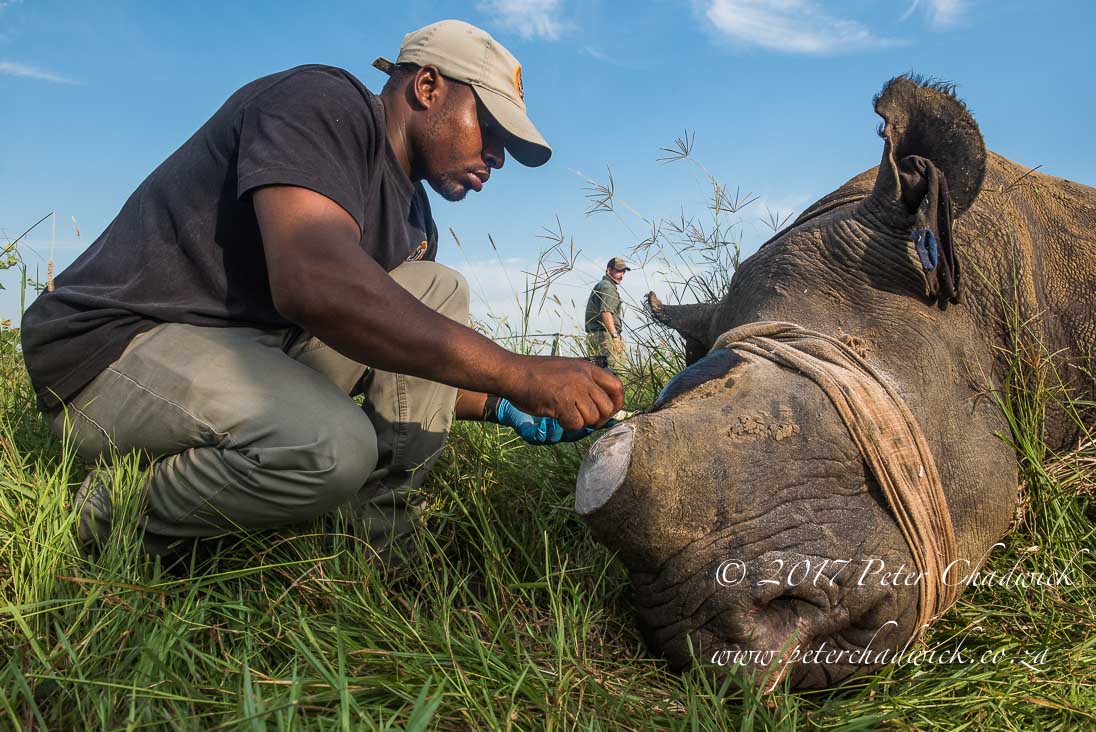 26 of 33: Cut horn stumps are covered with a protective layer that prevents any infections.
26 of 33: Cut horn stumps are covered with a protective layer that prevents any infections.
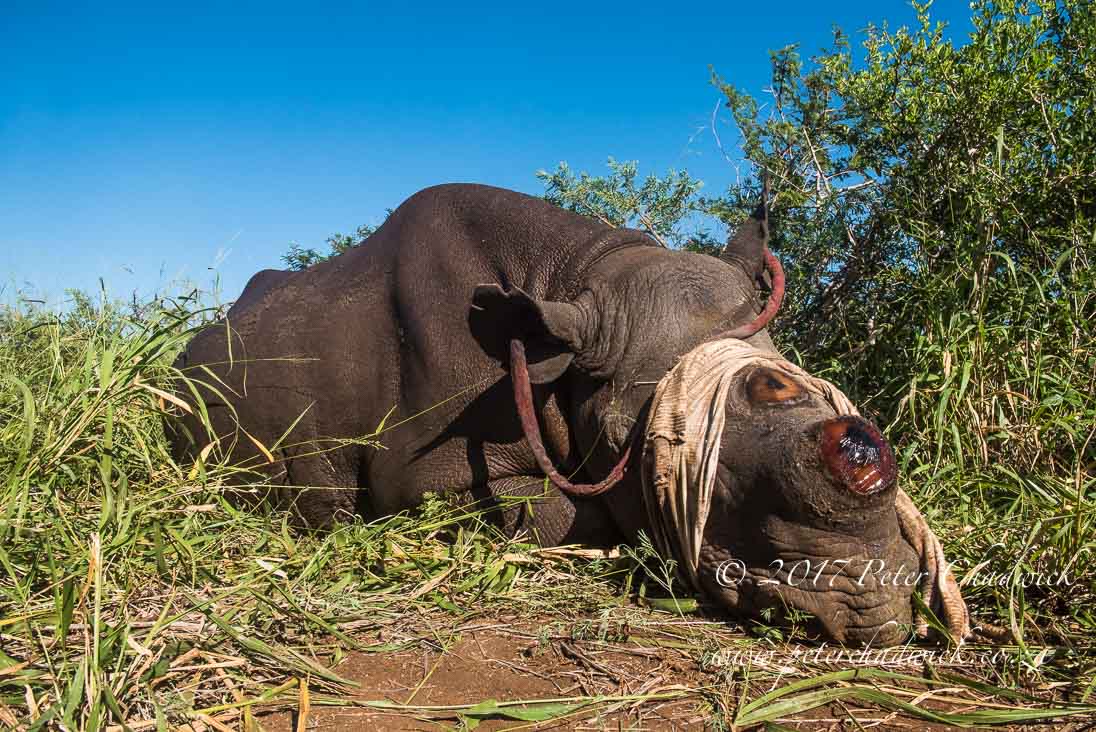 27 of 33: A dehorned black rhino with blindfold and ear-plugs in place prior to being woken.
27 of 33: A dehorned black rhino with blindfold and ear-plugs in place prior to being woken.
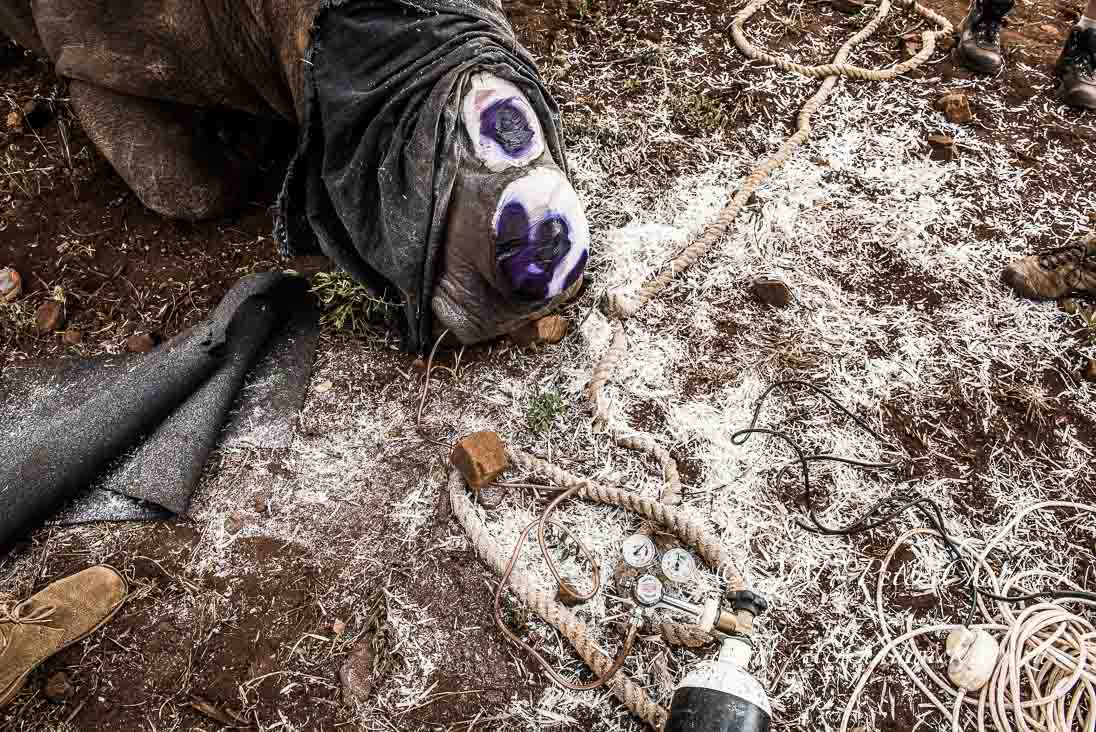 28 of 33: Horn shavings from dehorning are carefully removed from site. An oxygen cylinder also lies on standby to assist breathing for the rhino if necessary.
28 of 33: Horn shavings from dehorning are carefully removed from site. An oxygen cylinder also lies on standby to assist breathing for the rhino if necessary.
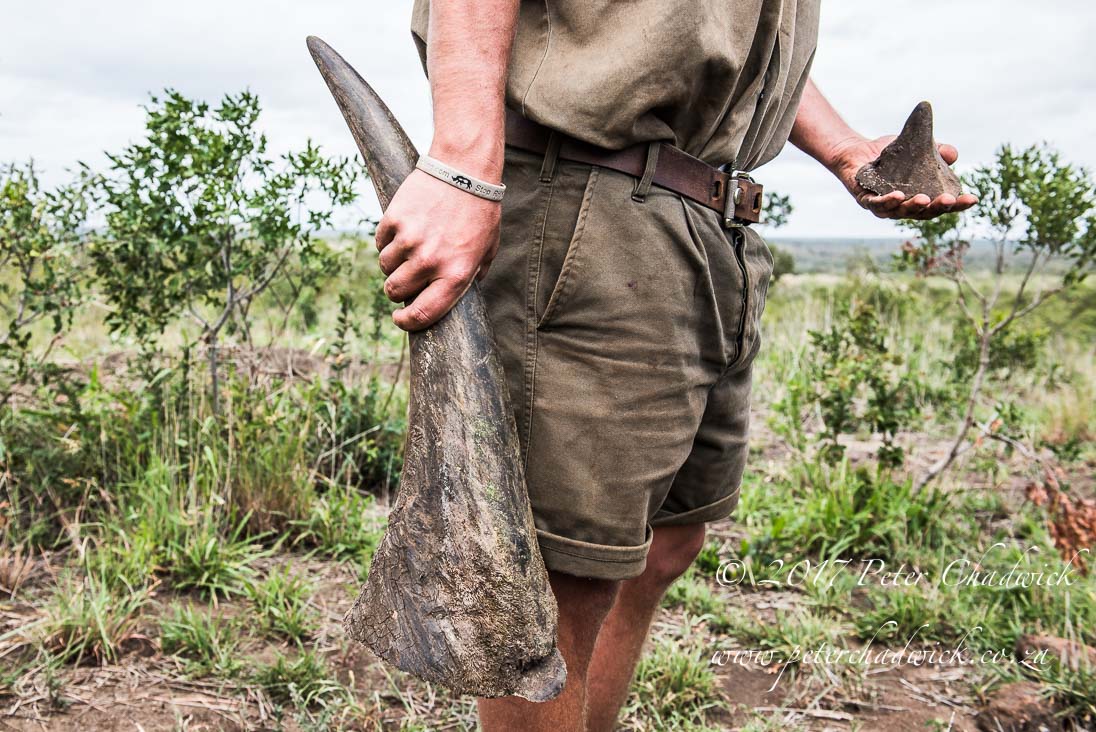 29 of 33: Removed horns are carefully removed to a secure place of safe keeping.
29 of 33: Removed horns are carefully removed to a secure place of safe keeping.
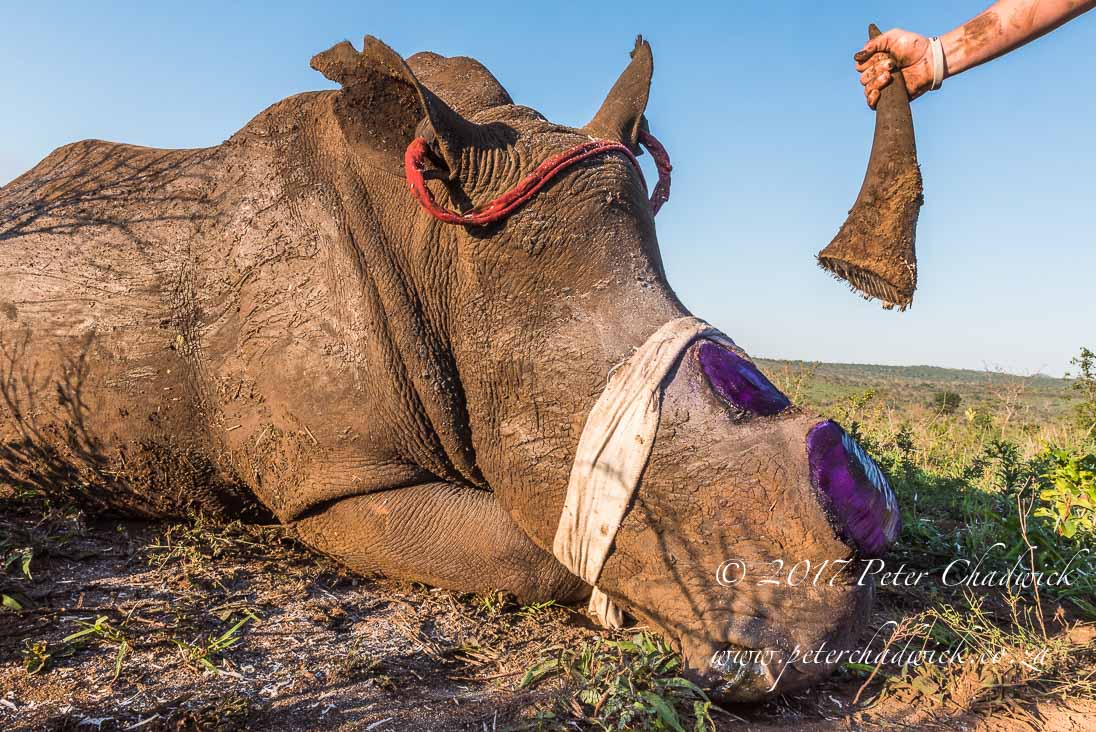 30 of 33: A dehorned white rhino awaits awakening.
30 of 33: A dehorned white rhino awaits awakening.
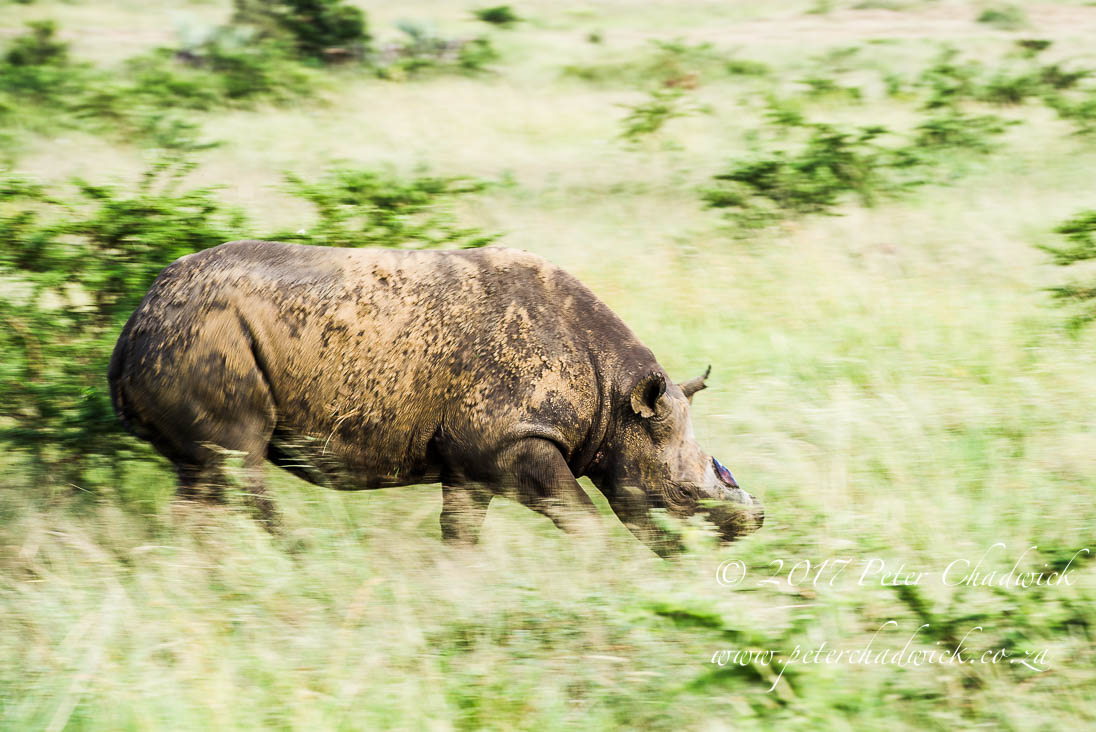 31 of 33: A black rhino runs off after succesful dehorning.
31 of 33: A black rhino runs off after succesful dehorning.
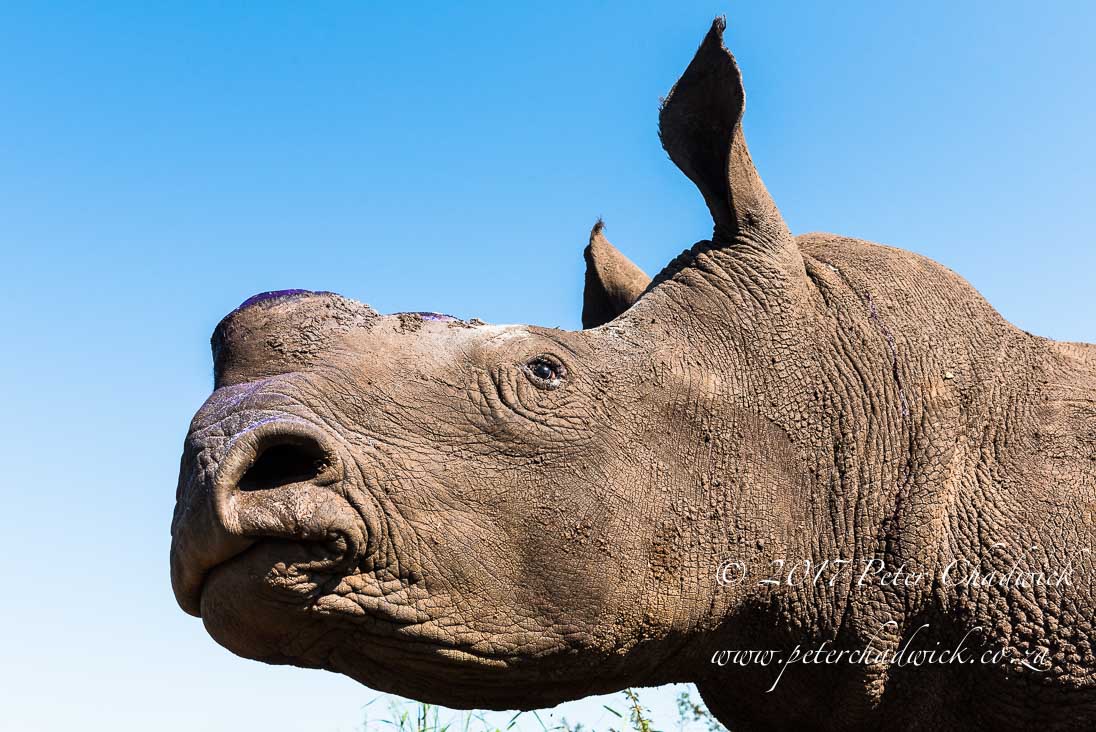 32 of 33: Although dehorning is intrusive, it has definately been found to reduce poaching pressure. Hopefully long-term solutions will be found that will nullify the need for future dehorning.
32 of 33: Although dehorning is intrusive, it has definately been found to reduce poaching pressure. Hopefully long-term solutions will be found that will nullify the need for future dehorning.
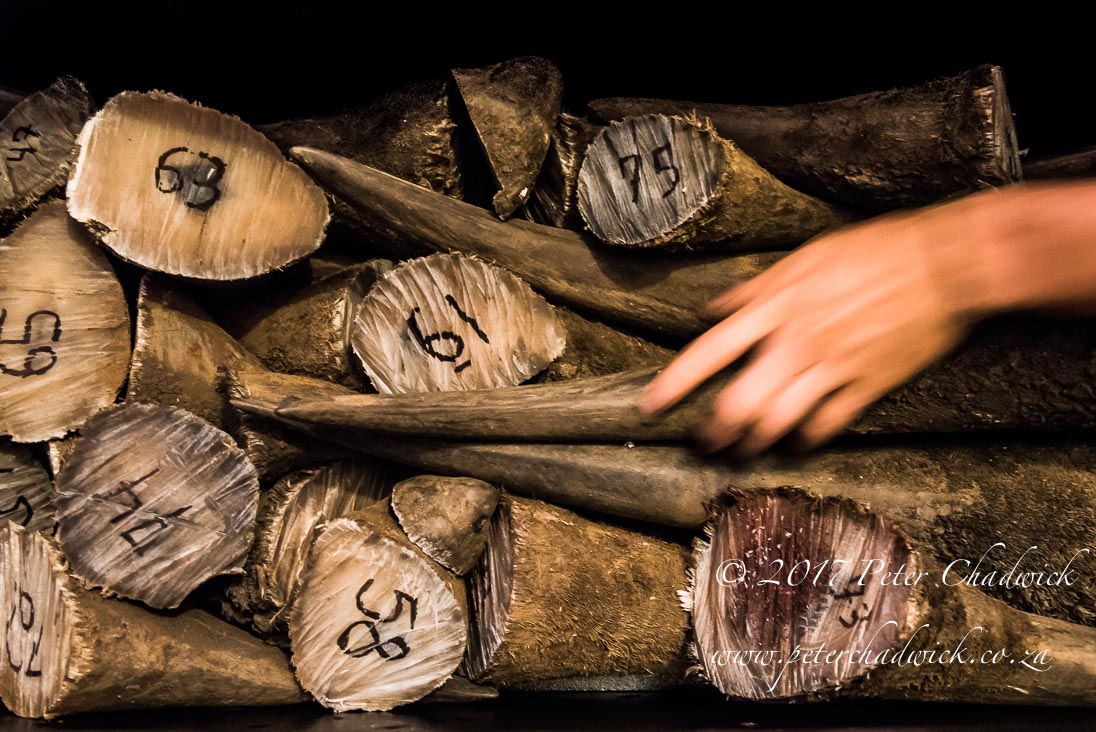 33 of 33: All removed horns are carefully recorded and catelogued and are then taken to an off-site location of safety.
33 of 33: All removed horns are carefully recorded and catelogued and are then taken to an off-site location of safety.

